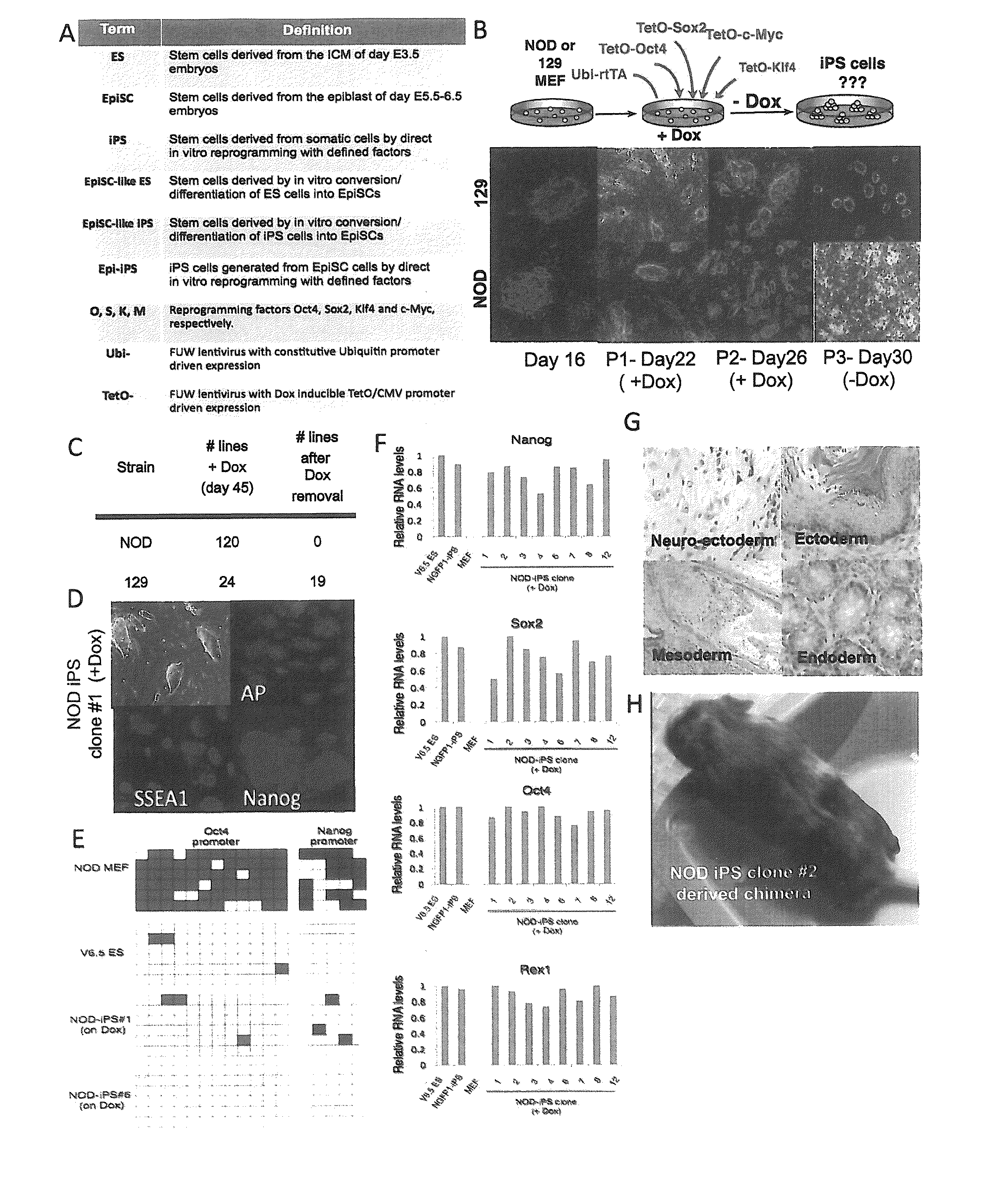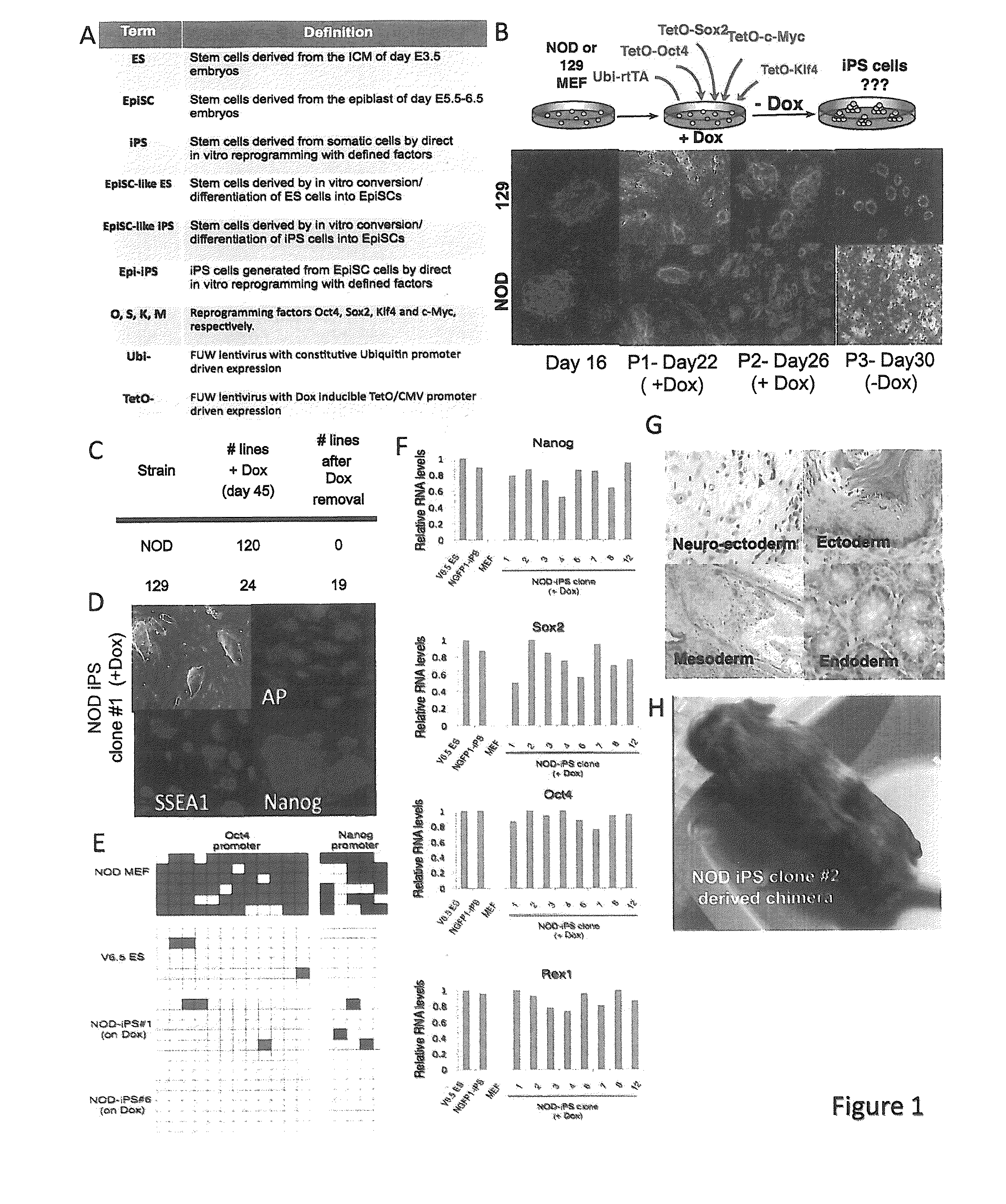Compositions and methods for deriving or culturing pluripotent cells
a technology of pluripotent cells and compositions, applied in the field of compositions and methods for deriving or culturing pluripotent cells, can solve the problems of slow growth, poor tolerance to passaging as single cells, and demanding culture techniques, and achieve the effect of increasing the tolerance to dissociation and increasing the amenability to genetic modification
- Summary
- Abstract
- Description
- Claims
- Application Information
AI Technical Summary
Benefits of technology
Problems solved by technology
Method used
Image
Examples
example 1
Metastable Pluripotent States in NOD Mouse Derived ES Cells
[0134]Embryonic stem (ES) cells are isolated from the inner cell mass (ICM) of blastocysts, whereas epiblast stem cells (EpiSCs) are derived from the post-implantation epiblast and display a restricted developmental potential. In this example, pluripotent states are characterized in the non-obese diabetic (NOD) mouse strain, which prior to this study was considered “non-permissive” for ES cell derivation. The results reveal that NOD stem cells can be stabilized by providing constitutive expression of Klf4 or c-Myc or small molecules that can replace these factors during in vitro reprogramming. The NOD ES and iPS cells appear “metastable”, as they acquire an alternative EpiSC-like identity after removal of the exogenous factors, while their reintroduction converts the cells back to ICM-like pluripotency. These findings suggest that stem cells from different genetic backgrounds can assume distinct states of pluripotency in vit...
example 2
Human Embryonic Stem Cells with Biological and Epigenetic Characteristics Similar to Those of Mouse ESC's
[0221]Human and mouse embryonic stem cells (ESCs) are derived from blastocyst stage embryos but have very different biological properties, and molecular analyses suggest that the pluripotent state of human ESCs isolated so far corresponds to that of mouse derived epiblast stem cells (EpiSCs). This example describes rewiring the identity of conventional human ESCs into a more immature state that extensively shares defining features with pluripotent mouse ESCs. This was achieved by ectopic induction of Oct4, Klf4 and Klf2 factors combined with LIF and inhibitors of glycogen synthase kinase 3β (GSK3β) and mitogen-activated protein kinase (ERK1 / 2) pathway. Forskolin, a protein kinase A pathway agonist that can induce Klf4 and Klf2 expression, transiently substitutes for the requirement for ectopic transgene expression. In contrast to conventional human ESCs, these epigenetically conv...
PUM
| Property | Measurement | Unit |
|---|---|---|
| Fraction | aaaaa | aaaaa |
| Fraction | aaaaa | aaaaa |
| Fraction | aaaaa | aaaaa |
Abstract
Description
Claims
Application Information
 Login to View More
Login to View More - R&D
- Intellectual Property
- Life Sciences
- Materials
- Tech Scout
- Unparalleled Data Quality
- Higher Quality Content
- 60% Fewer Hallucinations
Browse by: Latest US Patents, China's latest patents, Technical Efficacy Thesaurus, Application Domain, Technology Topic, Popular Technical Reports.
© 2025 PatSnap. All rights reserved.Legal|Privacy policy|Modern Slavery Act Transparency Statement|Sitemap|About US| Contact US: help@patsnap.com



